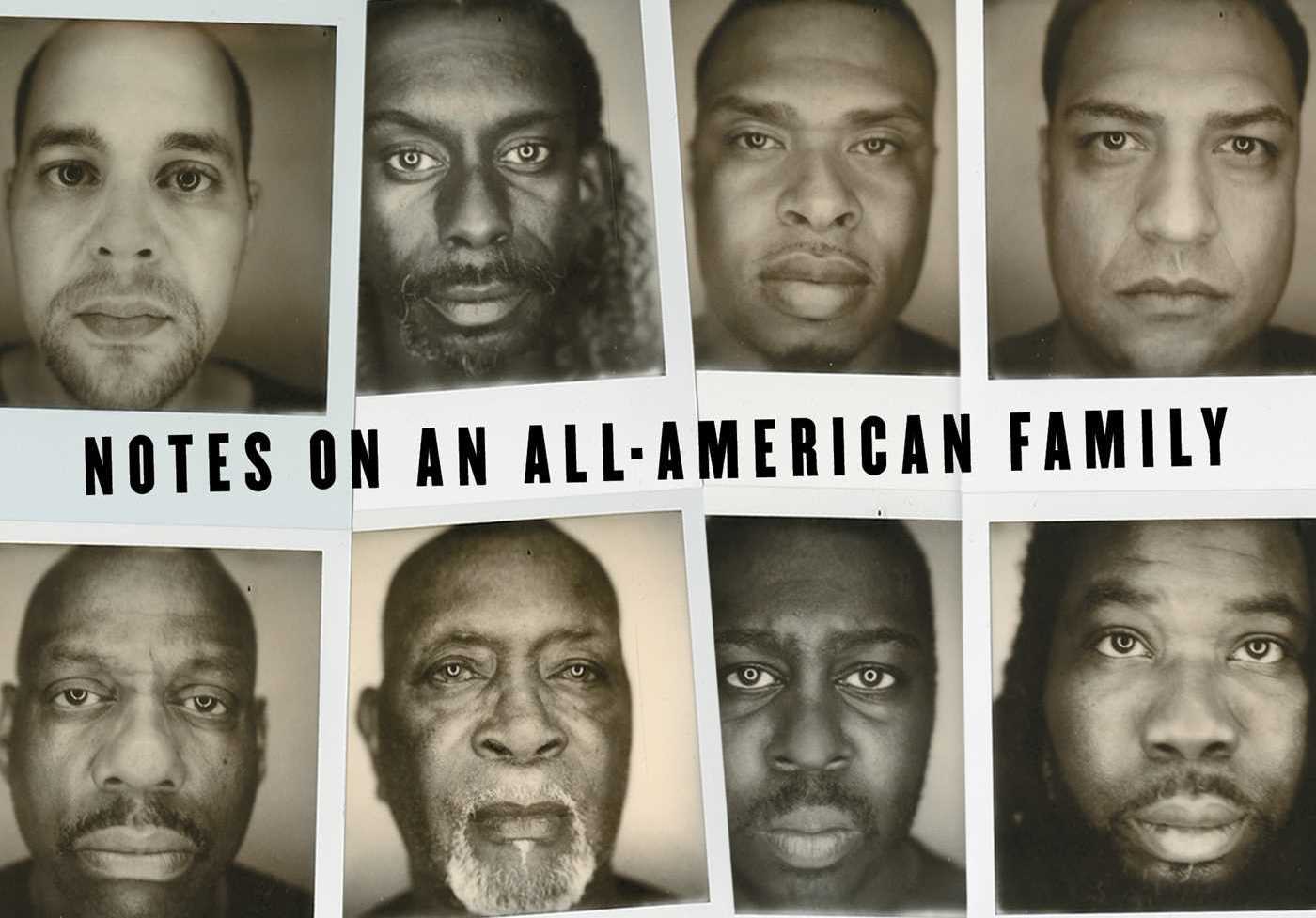Books & Culture
The Book All Prospective Adoptive Parents Need to Read
Nicole Chung's "All You Can Ever Know" made my life better as an adult adoptee—but it could have made things much easier as a child, too

Until I was 19 years old, I thought I was white. Friends, strangers, and teachers always sensed that I was different, asking never-ending questions: “Where are you from? Are you Indian? Latina? Why don’t you speak Spanish?” My parents told me to ignore them, but that didn’t shake away the uneasiness and frustration that these interactions left me with. It made me angry that people would question my identity, when I was raised to be so proudly Italian. Kids would often laugh, thinking I was joking or lying, and each time my heart would clench hard at the rejection. It never occurred to me that they could be right. My family was white, and I was a member of my family, so what else could I be?
But I wasn’t white. I was adopted, and my parents had never told me. Thanks to a DNA test, I was later able to discover that white was barely a chunk of my genetic makeup. Italian was less than one percent, and Indigenous, and some African, made up more than half of my biological makeup. When I further dug into my birth records I was able to confirm that I was indeed a mestiza, an identity that countered the 100% European ancestry I had been told my entire life. It had taken a few years after the discovery to get access to them, as my parents had hid them.
At the time, my parents’ actions weren’t that unusual. Prospective parents had few resources for learning about the experience of transracial adoption, and what it’s really like for a child to grow up with a family of another race. Back then, the literature available was not as easily found as it is today. Parents were relying on books like 1993’s The Primal Wound, by adoptive parent Nancy Verrier, which imagines adoptees as fundamentally traumatized by being removed from their first mothers. This book is still widely used in the adoption community, because better resources are few and far between. Books on adoption even today are typically written by mostly adoptive parents and only sometimes birth mothers. Few are written and published, especially traditionally published, by adoptees. Even books specifically on transracial adoption, which are finally becoming more common, still focus on teaching adoptive parents how to make it through adoption processes, ignoring the adoptee’s experience.
This is why Nicole Chung’s adoption memoir All You Can Ever Know made such an impact on me. It wasn’t just a book. It was a real story of someone who experienced similar things to me, and thousands of other adoptees, who are told to be grateful on an almost daily basis by family, friends, and society. It reflected the real pains of my childhood, not the ones imagined by people like Verrier—and I think it could have helped avoid them, too.
I wish my parents had been able to read All You Can Ever Know. I think every prospective adoptive parent should.
To be honest, Chung’s memoir was painful for me to read. It took me several months to get through a few chapters of the ebook, paperback, and then audiobook that I borrowed from my library. By the time I would muster up the emotional energy to move forward, my library loan was returned and I had to wait several weeks before it was my turn in line. Still, I couldn’t finish. This was strange for me. As an avid bookworm, I would digest whole novels in a few hours, at the most a few days. At first, I thought that I would be able to read it quickly as I did every other ebook I downloaded on my phone. I realized that wouldn’t be easy, when tears kept flowing out almost against my will. I tried an audiobook version next, partially because my library loan auto-returned my ebook and it was the next thing available, but also because it seemed like it may be easier to listen to while I tinkered around my house. But no matter the version I struggled to turn the pages.
Her story took me to a place in my mind where the wounds I thought I had gotten from my adoption had healed. But by reading her honest prose of her experience, I realized that I had just gotten started. When I entered Chung’s world over a year ago I could relate to her feelings of isolation and confusion, but by the time I had finally finished her memoir, I had received an unexpected surprise: I had half sisters, just like her.
I had opened my email one morning to see a letter from a woman several states away, and quickly learned more information about my birth mother than I was ready to handle. I had multiple siblings, and a birth mother who wasn’t the young scared pregnant woman that I was told about. Our story was full of pain and heartache, and not as simple as the one my parents were told from the adoption agency. The information was overwhelming.
And yet, fortified by reading about Chung’s experience, I didn’t feel like this was more than I could handle. I felt supported and happy that I wasn’t alone.
The simple beauty in holding a vessel of words, emotions, and information about a subject that had been taboo was a step towards healing that I wasn’t able to take before. That wasn’t available for me before—and it wasn’t available for my parents, to show them why I might need more support.
Chung’s memoir would have made my parents aware of the nuances of adoption—the good, the bad, the ugly, and even the beautiful.
I think my parents had good intentions when they decided to hide my race and origin story, but they were unprepared for the complexities that come with becoming a multiracial family. Chung’s memoir would have made them aware of the nuances of adoption—the good, the bad, the ugly, and even the beautiful. She discusses topics that prospective parents need to understand when considering adopting a child of another race, and most importantly, she, the adoptee, is in charge of the narrative.
When Chung was very little, the story her parents told her was always the same: “Your birth parents thought they wouldn’t be able to give you the life you deserved.” She was told this so often, and at such a young age, that it was the first tale she could recall. This is important because it normalized her adoption, and cemented her place in her family. She knew the answer (“because I’m adopted”) before she was even able to formulate the question (“why am I different?”). Adoption was the norm in her family.
Until a few years ago, there wasn’t much research on when children should be told they were adopted. Nobody even raised the question to my parents; instead, they were flooded with information about adoption fees, laws on international adoption, and travel information. So when it came down to a discussion about sharing my adoption story with me, it wasn’t seen as important—love, a home, and resources were what they were supposed to provide to me as their child. They wanted to believe that by adopting me, they were saving me from a bad life, and that was all that was important. I wouldn’t remember my birth family, so why did the truth matter?
We see how the world perceives and treats us differently, even if it is not talked about at home.
Now, parents and professionals advocate for telling the adopted child their story of origin as soon as possible. By telling adopted children their stories early on, and their stories as honestly as possible, parents can help children feel more stability, love, and confidence in who they are. Transracial adoptees notice our race or ethnicity from a young age. We see how the world perceives and treats us differently, even if it is not talked about at home. My questions were answered with lies: “Oh, your great-great-grandparents had dark skin.” This created a lot of identity issues and shame—especially because I’d been repeating these falsehoods, which meant that I had accidentally been lying all my life. A book like this, in which an adoptee encourages honesty about adoption, might have helped prevent that.
This is not to say that adoptees themselves should shoulder the full burden of telling prospective parents what to do. Chung later shares a story of a time in college where her friends talked to her about her personal experience as an adoptee and her opinion on adoption in general, peppering her with questions like “Do you ever feel like your adoptive parents aren’t your “real” parents?” and “Did you ever mind not being white?”
It’s an uncomfortable moment; we are not all the spokespeople for every adoptee, and all of our opinions may differ, especially at different points in our lives. Plus, adoptees are often met with anger, resentment, and even attacks when they try to explain about the potential complications that arise within a transracial adoption. But this is another reason why we need more memoirs from the perspective of adoptees. If my parents had been able to delve into Chung’s book (and the other adoption memoirs that will hopefully follow), they would have known that while yes, she sometimes “minds” not being white, it’s also deeply important to her to be able to engage with her Korean heritage.
The ties I have made with my birth culture hold such an important part of my heart. They bring joy, when my toddlers speak in Spanish, and reads along to my childhood favorites in the language I had heard the entire time I was in my mother’s womb. Children remember. Somewhere in the backs of our minds, our first experiences with language may help us when we attempt to learn the language as we grow older, better than non-adopted persons with no exposure to the language.
Chung writes, “No one ever so much as hinted to my parents that adopting across racial lines might prove a unique challenge, one they needed to prepare for specifically.” Unfortunately, this is still the case in many transracial adoptions. Often I hear the narrative from prospective adoptive parents that “love makes a family,” or just like Chung and many other adoptees, I have heard a variation of “you’re one of us, it doesn’t matter.” All too often adoptive parents decide to go into their new family with a colorblind view because the focus in adoption is on the “miracle” and not what comes after. Frequently the professionals involved in adoption will gloss over and spend such a minute amount of time on the importance of incorporating the child’s birth culture throughout their lives.
When I discussed the adoption process with my parents I was told about the recommendation letters they needed, finance and employment verifications, and the few times a social worker checked their home in order to get clearance to adopt. When it came to my birth culture, my parents were vaguely encouraged to take my brother and me to a summer camp for Colombian adoptees that the orphanage had ties to. The camp was expensive, far away from our suburban home, and by the time I had started to form memories, they had decided that my ethnicity didn’t matter. I was their child, and after the first year or so no one followed up on us.
An adoptive parent’s love does not eliminate the struggle of existing in the middle of two cultures.
An adoptive parent’s love does not eliminate the struggle of existing in the middle of two cultures, being too much of one, and yet not quite enough of the other in the same breath. Chung illustrates the struggle of how an adoptive family can be loving, nurturing, supportive and yet how she still struggled with being one of the few people of color she saw in her town. She had grown up in a place where most of the faces did not look like hers, and often wished she looked like her parents, particularly when strangers would ask questions about her origin.
“I was not their Korean child, I was their child, their chosen gift from God,” she writes. She goes on to explain that there wasn’t room for her to tell them that she didn’t feel like she’d belong. Like other adoptees, she did not want to betray her parents. Even I, after finding out about my parents secrets, hated breaking it to them that all of my life I felt different, I was treated differently. I had known deep down that I didn’t fit in with their family. I always stood our, especially after puberty when I looked more and more Latina. My cousins fit into low-waisted skinny jeans in size 00, and when I looked at my curves, I hated them. Every Christmas the clothes that were left under the Christmas tree were too small for my thicker thighs and shirts could not go over my breasts that seemed to pop up overnight. Tears often flooded my eyes as my parents suggested I gained too much weight, when I could not exercise my shape away.
Prospective parents of adoptees need a book like this to help open their eyes fully, to the experiences that many adoptees face. Love is an amazing thing, but it does not erase the differences between people. Our skin color, the shape of our eyes, what we see in a mirror, or in the reflection of the diversity of the town we grew up in will shape our experiences as people of color. It will affect our self-esteem, confidence, and resilience to the good, the bad, and the ugly of being different from the people in our family.
This book, which was such a joy for me to discover as an adoptee, might be hard for adoptive parents and prospective parents to read. No parent wants their child to experience any type of trauma. As adoptive parents it is your responsibility to learn about the experiences, and help your children, and in order to do that you need to be ready to accept that the world can be an uncomfortable place for people of color, but it can be so beautiful too. Chung writes about being brought to the Chinatown International District during a visit to Seattle, and being for the first time exposed to faces that looked like hers. She lit up, because she was amazed by the sights, smells, and sounds of other Asians like her. If adoptive parents learn how to incorporate experiences like that, and how to navigate the difficult ones as well, then maybe they are ready for a transracial adoption.
Books like Chung’s can be life-changing for adoptees who read them—but they can also be life-changing for the next generation of adoptees.
Books like Chung’s can obviously be life-changing for adoptees who read them—but I think they can also be life-changing for the next generation of adoptees. If you are considering adopting a child of color, this book will help you on your journey. It will help you prepare for situations that you may never have thought about before. It will help you address your views on racism, microaggressions, and how you will navigate a child of color through those experiences when you are from a place of privilege. It will open your eyes to an adoptee’s experience that is fair, honest, and raw. And above all, it will place the voice of a transracial adoptee in the spotlight. Adult adoptees will be honest, raw, and passionate about their adoption stories and these are the perspectives that are often missing. Chung’s memoir helps break that barrier and can help potential adoptive parents on their path to learn what they need before they adopt, and even after. To help decide if this is the right course for them, AND the child. Because the child should come first.









